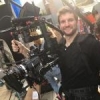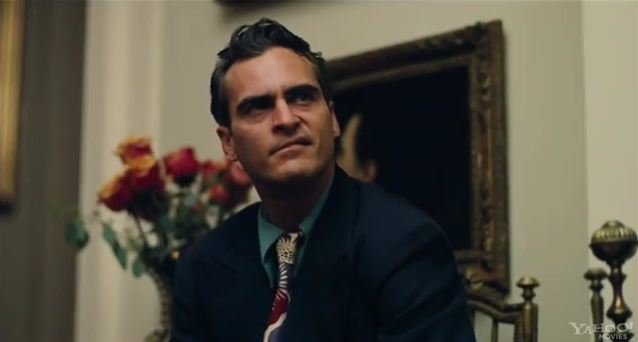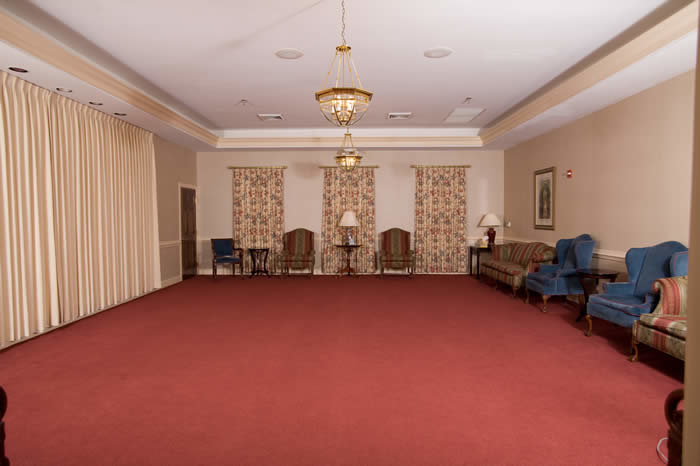-
Posts
17 -
Joined
-
Last visited
Profile Information
-
Occupation
Cinematographer
-
Location
New York
Recent Profile Visitors
The recent visitors block is disabled and is not being shown to other users.
-
Hey all, I had to film a low-budget commercial a couple years back which relied mostly on a straight-on shot from in front of the car, pointing through the windshield at 2 actors. The wide version of the shot needed to be on a long lens, and show one of the actors entering the car. I had an issue with greenish tinting on both the front windshield and back windshield. It was subtle, but it was there, and I had to solve it by using 1/8 magenta on my key light. My question is how easy or common is it to use some sort of special clear auto glass that won't throw a tint onto the scene? Is it cheap and easy to find? Thank you for any tips! -Trent
-

Pitching and Pre-Production: Tools and Methods
Trent Watts replied to Trent Watts's topic in Business Practices & Producing
Thanks AJ! Emailing you now -
Hey all, I'm trying to land my first feature narrative as a DP, and most of my experience is in documentary-style commercials and branded content. It's a non-union feature, budgeted at about $150K. I want to put a great pitch together for the director to sell him on my ability to pull this off. I'm also hoping we can parlay this document into something that will be useful once we get started in pre production. I want to incorporate a lot of reference stills I've already collected, and show my ideas for color palettes, lighting styles, camera movement, etc, in addition to ideas on logistics to keep it within budget. The director seems very open to visual ideas, is a more writing/acting-oriented director and has expressed that he wants the cinematographer to bring their own strong perspective to this. Right now, I was just going to lay everything out in a google document. But I was wondering if anyone here as some methods they've found to be very efficient and useful over the years for presenting their approach. Are cinematographers using studiobinder or other software? Is there some good color palette software to create colored squares from my reference photos? How much do you go into ideas about logistics, crewing, scheduling, etc.? Are any DP's using script-breakdown software that correlates all these elements directly to a script document? I would love to hear any of the software, tools, methods, and any helpful tips that you use for this process! Thank you!
-

Using Convex Mirrors for Sunlight bounce
Trent Watts replied to Trent Watts's topic in Lighting for Film & Video
Light dispersion (not direction) is what I'm trying to achieve. But I realized that the dispersion will reduce the sun's intensity as well, so it won't work. Thanks for the feedback though. -
I shoot corporate interviews in bland offices all the time, and have lit about 1,600 interviews in my career to date. There's lots of tricks you can use in situations like this. The first and simplest trick is to to use a longer focal length, and make it a tighter shoot, shoulders up. Then it's really more about lighting the face and hair, and contrasting the face with your background color. This will throw the background out of focus easier too. Secondly, be aware of lighting your talent with the same lights as your background. You have no fall-off to your background because your lights are coming at the subject full frontal with no flags or grids. In addition, your walls being slightly off-blue gives you a chance to accentuate a color-temp difference between your foreground and background. you could go 4400K on your talent and keep your background at 5600K. Thirdly, the flower looks very forced here. Create your composition first and think what in your environment you can move into the composition before you set even 1 light up. Beginning filmmakers often feel pressure to start setting lights up right away. However, the most important step is the first step of really taking in the room, figuring out what you can move, what you can't move, and knowing all the variables and possible angles of the location. Only once you have gone through this checklist should you begin setting up your shot. Fourth, you have lights blasting from all sides with no apparent thought to shaping shadows. Get a couple cheap 5-in-1 reflectors and sell off 2 of these 4x4's. You can use these 5-in-1's for bounce, diffusion, AND negative fill. You are using too many lights here and I think it's adding unneeded technical complexity to your setup, when you should be focusing more on refining the basics. I shoot most of my interviews with just 2 or 3 lights from my kit of about 7 lights, and a couple 5-in-1 collapsible reflectors. All of my lights are different and each ones have their pros and cons. You have four 4x4 kinos here which is serious overkill for this situation. They must be extremely limiting and cumbersome to work with too. I would probably light this whole setup with 1 diva-lite for my key, 1 astra for a hair/edge light, and possibly a small fresnel or 2nd astra to give the background some sort of gradient. Anyway, I hope this all helps a bit. Good luck!
-
I was wondering if anybody has experience bouncing sunlight with convex mirrors to light up a large area with sunlight. Any tips? Would this actually work? I'm looking at this 36" dome mirror from U-Line for this. https://www.uline.com/Product/Detail/H-1885/Safety-Mirrors/Full-Dome-Acrylic-Mirror
-

Bouncing Lighting off the Ceiling vs. Muslin
Trent Watts replied to Trent Watts's topic in Lighting for Film & Video
Thanks to everyone for the advice. One more thing.. What strategies do you recommend for keeping the most consistent light possible coming through the one open window ON A LOW BUDGET. I cant afford to rent 10K HMI's. So my thoughts were just to keep metering it and add/take-away ND gel when needed. Although, I'm still worried about color temperature changes, as it's supposed to be a partly cloudy day. Any suggestions? Should I just simply re-arrange my setups according to when the clouds part? Seems like a chore. -

Bouncing Lighting off the Ceiling vs. Muslin
Trent Watts replied to Trent Watts's topic in Lighting for Film & Video
Also, my thought for the longest time was to use the windows as sources too. But then I realized that having open windows might be awkward for the scene (basically, a dead naked woman on a table being prepared for a funeral). -

Bouncing Lighting off the Ceiling vs. Muslin
Trent Watts replied to Trent Watts's topic in Lighting for Film & Video
Thanks for the quick replies. For my WS I'm actually just going to hide the ceiling and bounce lights off of it from wherever I can hide them. I'm thinking that I'll use a light source in the 4400K-5000K range to simulate overhead flourescents. I'm going to use a pro mist 1/2 filter to flare out the practicals a bit, since they won't allow a haze machine in the room. -

Bouncing Lighting off the Ceiling vs. Muslin
Trent Watts posted a topic in Lighting for Film & Video
I'm lighting a scene similar to this scene from The Master. The ceiling is drywall and is painted pure white. To get a good top light, can I just bounce a lot of lights off the ceiling or do I need to rent muslin? Here's another visual reference, with warmer top light. I'm still not sure what temp to make the top light. Here's the location I'm working with location photo 1 (daylight-flash from still camera) location photo 2 (no flash) I'll have about 3 hours to pre-light with a crew of mostly inexperienced PA's, so ease of setup is a big factor. -
I don't work in LA or New York, I work in Washington, DC where it's very hard to make a living doing just camera department jobs. That being said, more and more of my clients are small production companies and ad agencies who hire me to shoot, while they produce and edit. I've been in the freelance game for about a year, and am making a decent living with about 50% of my work coming from 2 clients. I'm trying to find more clients like them, and before I send my brand new demo reel out, I'm wondering if anyone has some clever suggestions for getting a higher watch rate. I've realized half the battle is just staying fresh in their minds when they do have work that comes up. There's only about 50 to 60 prospects in my area (higher-end production companies/pr firms) so I feel all my communication with them has to be very effective. Any suggestions?
-
I'm trying to decide which wide angle prime lenses to rent from borrowlenses.com. I'm shooting a commercial with a 5D Mark 2 and am wondering when it would be overkill to use the Zeiss compact primes or even the Canon CN-E's over the Zeiss Distagon lenses. This commercial will only be shot with wide angle primes in the 21mm to 25mm range, and NO FOCUS ADJUSTMENTS will need to be made during shots. Ideally, barrel distortion would be kept to a minimum too. I need to decide ASAP as lenses need to be balanced with the steadicam by Tuesday. Your help is appreciated!
-

What's a smoother conform: 50p to 24p or 60p to 24p
Trent Watts replied to Trent Watts's topic in D-SLR
Actually, I should be asking, what's smoother between 30p to 24p and 25p to 24p. -
I'm planning to use magic lantern's hdr video mode which interpolates frames with different iso's resulting in a higher dynamic range image when you combine them in post. You have to shoot at twice the frame rate to make it work, but of course canon dslr can't shoot at 48p. So what would be a smoother-looking conform to 24p (23.98): 60p or 50p. At first, I would think 50, but if that takes 1 frame out every second, then wouldn't it be better to spread 6 frames out over that same second?
-

Canon C300 with Canon L lenses vs. 5D Mark 3 with Zeiss primes
Trent Watts replied to Trent Watts's topic in Canon
Thanks for everyone's advice, I've decided to go with the C300 since I tested it out yesterday and as long as I don't use a rail system, it works very well with my Glidetrack!








